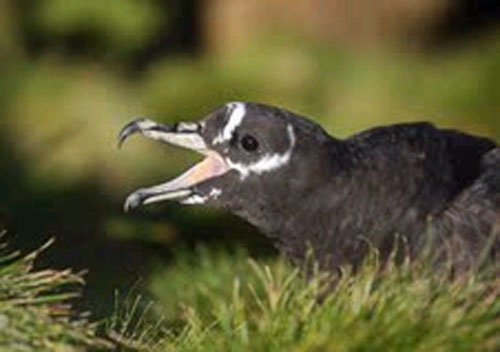Paloma Calabria Carvalho (Graduate Program in Biological Oceanography, Federal University of Rio Grande, Brazil) and colleagues have published in the journal Environmental Toxicology and Chemistry on metal and selenium concentrations in blood and feathers in ACAP-listed White-chinned Procellaria aequinoctialis and Spectacled P. conspicillata Petrels.
The paper’s abstract follows:
“Concentrations of copper (Cu), zinc (Zn), cadmium (Cd), lead (Pb), mercury (Hg) and selenium (Se) were determined in blood and feathers of spectacled (Procellaria conspicillata) and white-chinned (P. aequinoctialis) petrels, species that are phylogenetically related, but with distinct ecological niches. In winter, they feed on similar foods, indicated by an overlapping range of whole-blood stable isotopes values (δ15N; δ13C). No relation was found between blood metal concentration and stable isotope values. In spectacled petrels, metal concentrations (in µg/g) appeared lower in blood (Cu=0.79-20.77; Zn=10.95-28.02; Cd=1.73-10.11; Pb=5.02-26.03; Hg=0.84-9.86) than in feathers (Cu=1.05-21.57; Zn=45.30-81.49; Cd=3.76-10.44; Pb=16.53-59.00; Hg=4.24-24.03). In white-chinned petrels, metal concentrations also appeared lower in blood (Cu=0.62-10.40; Zn=10.73-24.69; Cd=2.00-6.31; Pb=5.72-24.03) than in feathers (Cu=2.68-23.92; Zn=48.96-93.54; Cd=5.72-24.03; Pb=18.62-55.51), except for Hg (blood: 0.20-15.82; feathers: 0.19-8.91). Selenium (0.24-14.18) and Hg (0.22-1.44) concentrations showed a positive correlation in growing feathers of spectacled petrels. Blood and feather Hg levels were higher in spectacled petrels while feathers Cu and Zn concentrations were greater in white-chinned petrels. Juvenile white-chinned petrels exhibited greater blood Hg concentrations than adults. In the South Atlantic Ocean, discards from commercial fishing operations, consumed by spectacled petrels year-round, and by white-chinned petrels during the wintering period, have elevated Hg concentrations. Because Hg toxicity is associated with behavioral and reproductive changes in birds, it could potentially have impacts on breeding of these seabirds, as both species are listed as threatened by extinction.

Spectacled Petrel. Photograph by Peter Ryan
Reference:
Calabria Carvalho, P., Bugoni, L. Mcgill, R.A.R. & Bianchini, A. 2013. Metal and selenium concentrations in blood and feathers of petrels of the genus Procellaria. Environmental Toxicology and Chemistry DOI: 10.1002/etc.2204.
John Cooper, ACAP Information Officer, 27 April 2013

 English
English  Français
Français  Español
Español